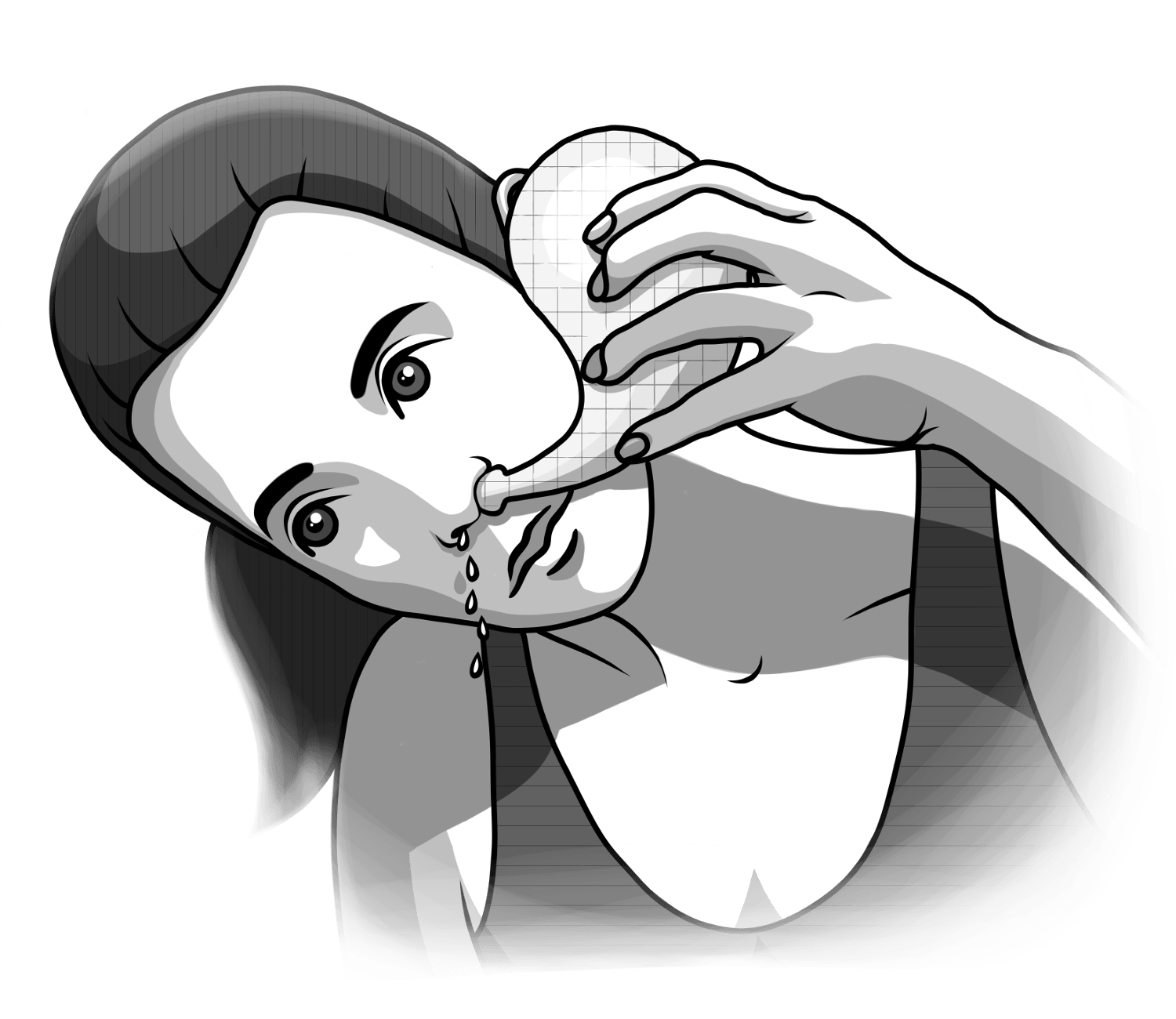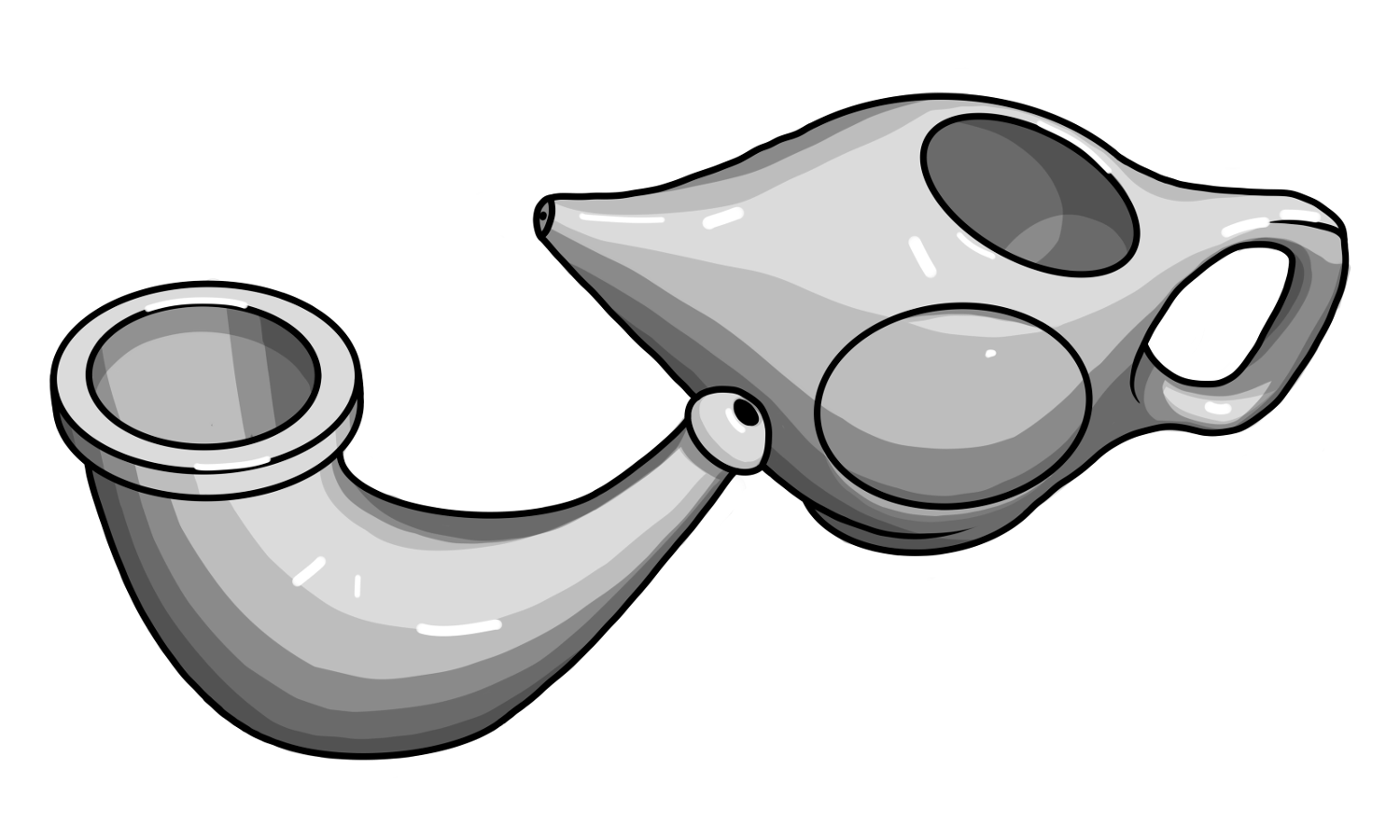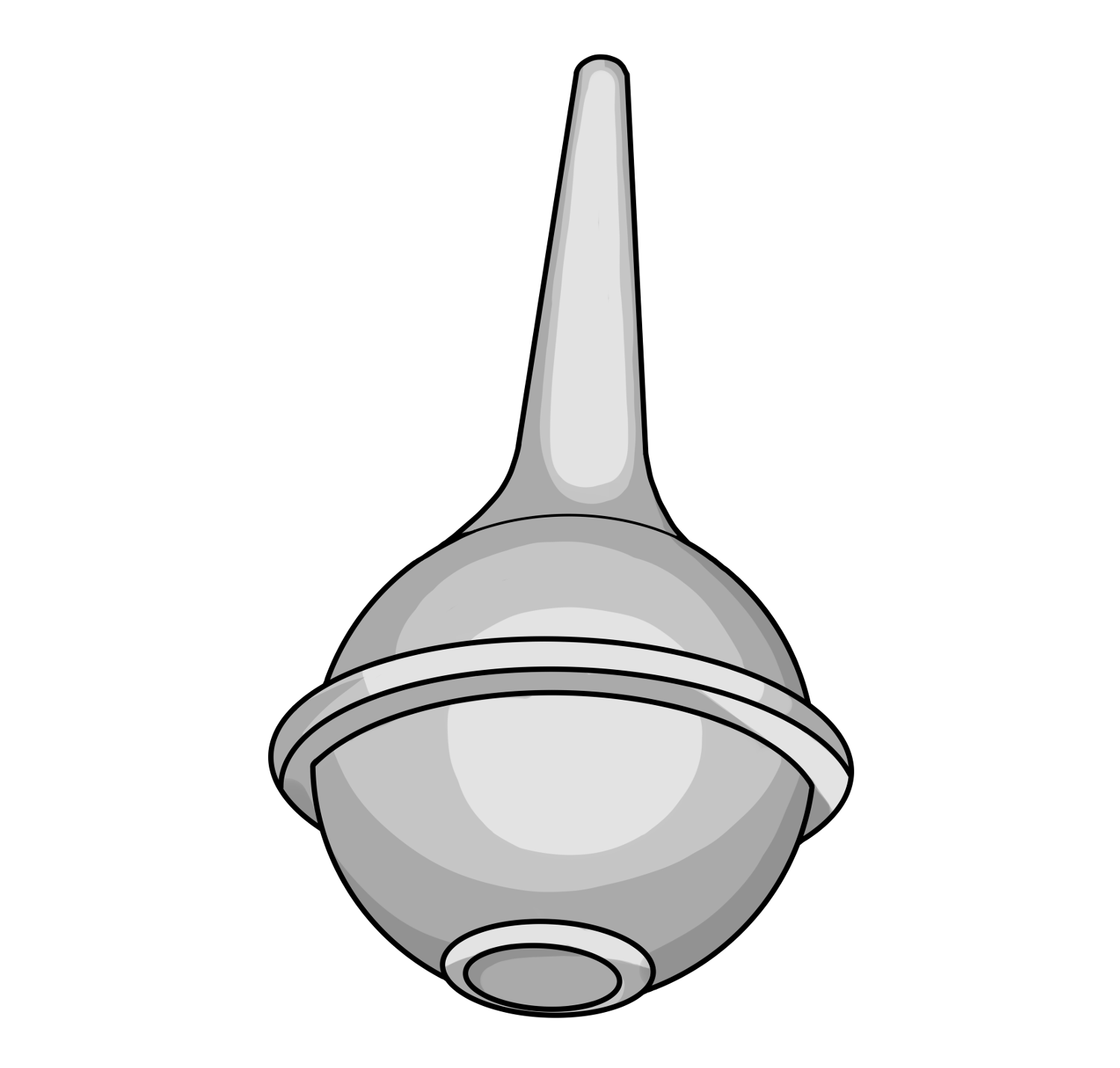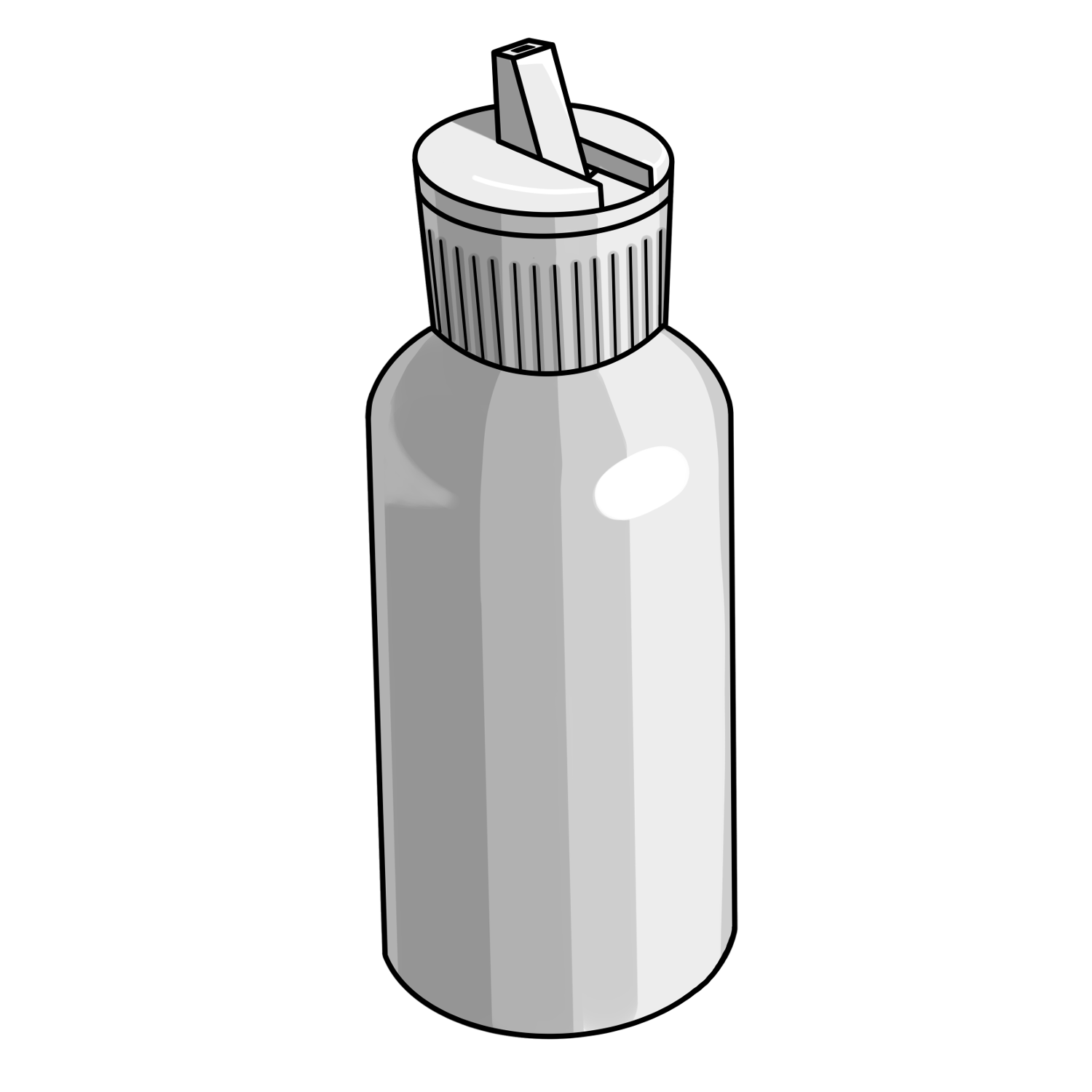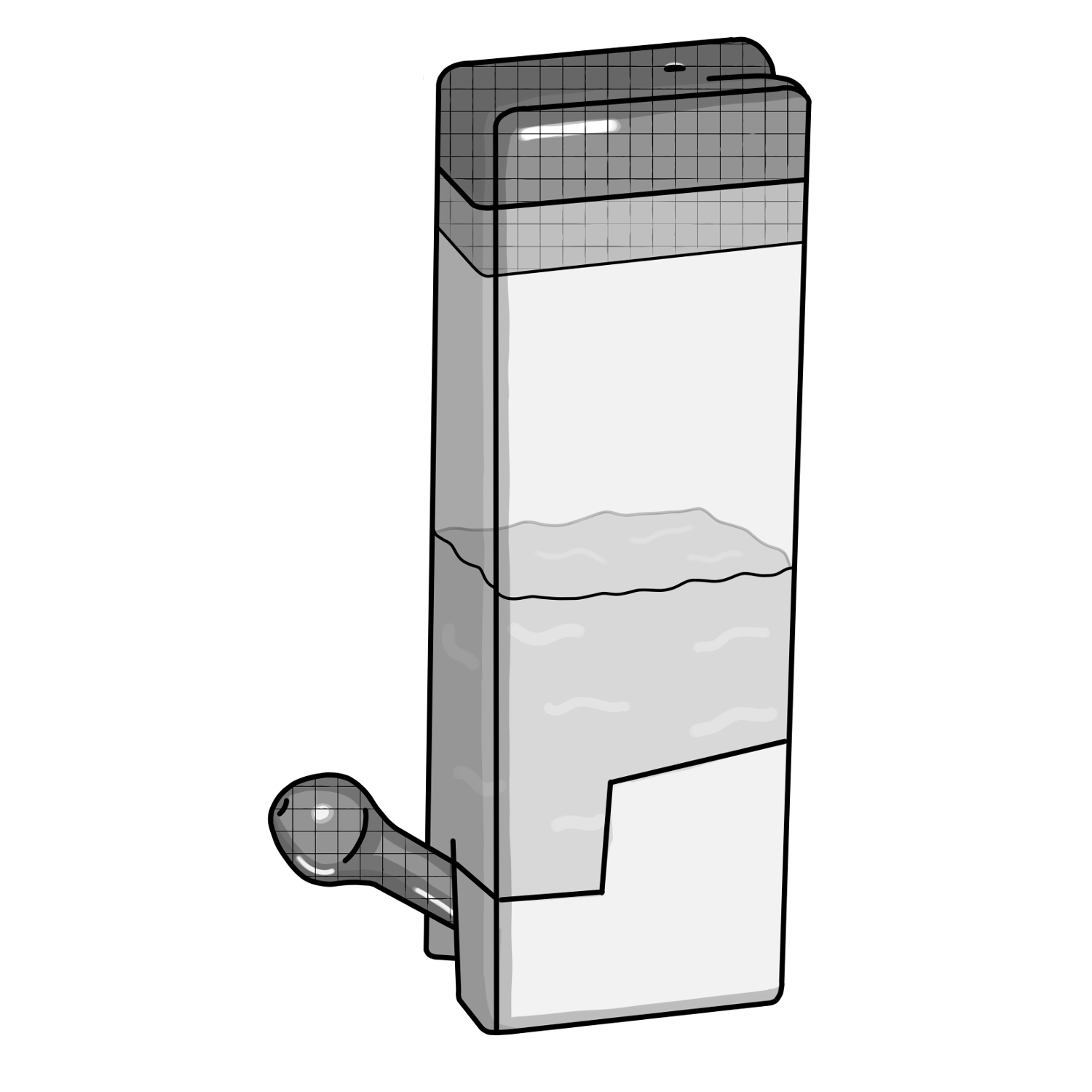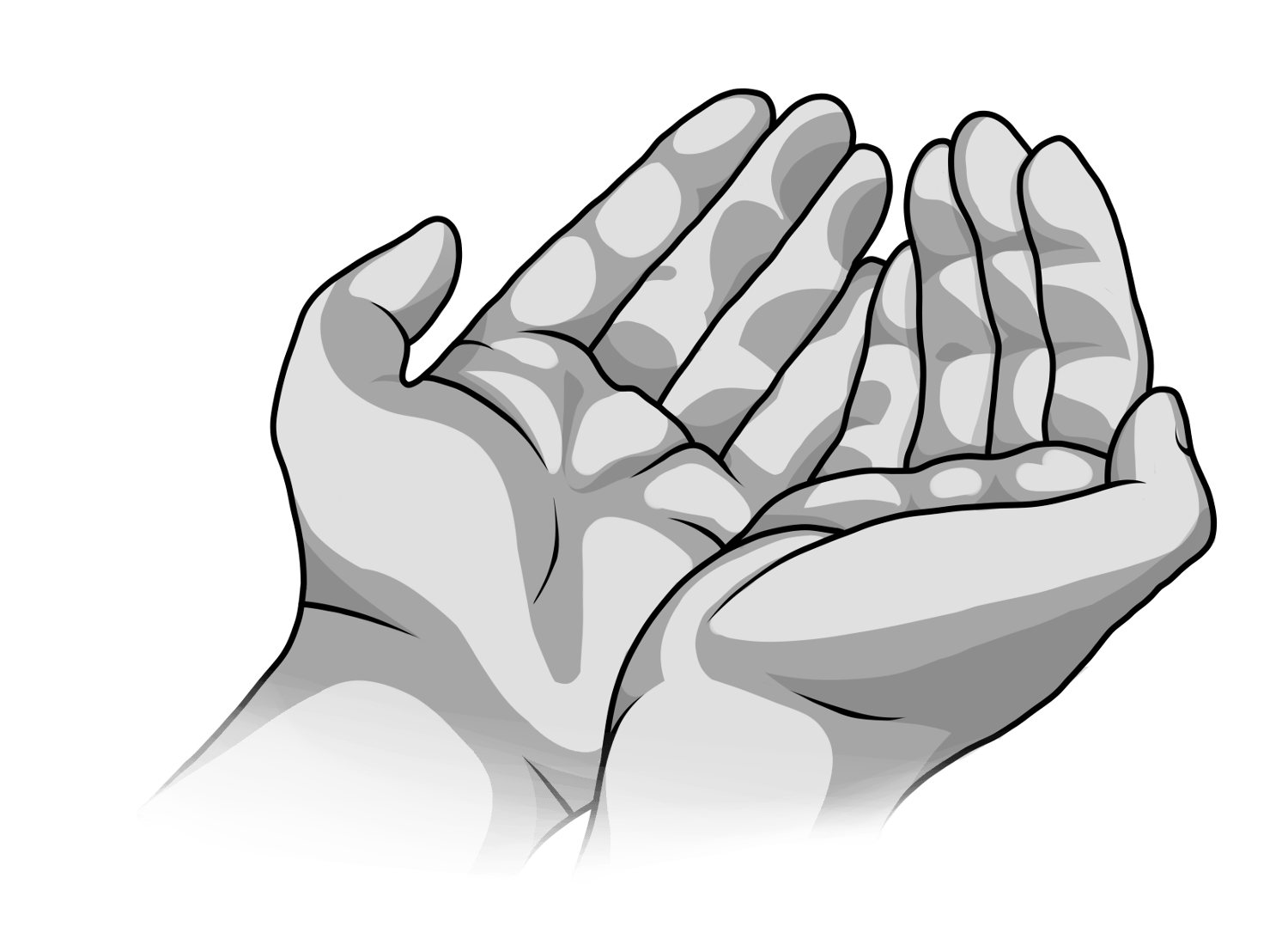Difference between revisions of "Nasal rinsing/pl"
(Created page with "== Przygotowanie == Do tego zabiegu higienicznego potrzebne będą:") |
(Created page with "=== Wodny roztwór soli === Możesz albo kupić gotowy roztwór do płukania nosa w aptece, albo przygotować go samodzielnie. <br /> To bardzo proste: # Odmierz łyżeczkę s...") |
||
| Line 21: | Line 21: | ||
Do tego zabiegu higienicznego potrzebne będą: | Do tego zabiegu higienicznego potrzebne będą: | ||
| − | === | + | === Wodny roztwór soli === |
| − | + | Możesz albo kupić gotowy roztwór do płukania nosa w aptece, albo przygotować go samodzielnie. <br /> | |
| − | + | To bardzo proste: | |
| − | # | + | # Odmierz łyżeczkę soli morskiej lub kamiennej (niejodowanej) bez dodatku substancji przeciwzbrylających i konserwantów, które mogą podrażniać śluzówkę nosa lub zatoki. |
| − | # | + | # Dodaj 1/4-1/3 łyżeczki sody oczyszczonej (opcjonalnie). |
| − | # | + | # Dodaj szklankę (250 ml lub 8 oz) przegotowanej, demineralizowanej, destylowanej lub poprawnie przefiltrowanej wody w temperaturze pokojowej. Nie używaj wody z kranu. |
| − | # | + | # Rozmieszaj sól i sodę. Do mieszania użyj sterylnego narzędzia. |
=== Container to administer the solution === | === Container to administer the solution === | ||
Revision as of 09:23, 4 August 2020
Płukanie nosa albo irygacja nosa to zabieg higieniczny polegający na przepłukaniu jamy nosowej
Efekty
- wypłukanie śluzu i zanieczyszczeń z nosa i zatok przynosowych
- zmniejszenie opuchlizny
- zmniejszenie dotkliwości bólów twarzy, bólu głowy, halitozy, krwawienia spowodowanego przewlekłym zapaleniem zatok
- wsparcie funkcji oddechowej w ostrym zapaleniu górnych dróg oddechowych
- ulga w zapaleniach wynikających z reakcji alergicznej
- zapobieganie efektowi podkrążonych oczu w przypadku alergii
UWAGA! Nie należy przeprowadzać tej procedury przy całkowicie zatkanym nosie. Skontaktuj się ze swoim lekarzem, jeśli masz jakiekolwiek wątpliwości dotyczące bezpieczeństwa tej procedury.
Pochodzenie, historia
Płukanie nosa – w Sanskrycie nazywane Jala Neti – było rozwijane jako tradycyjny zabieg w jodze ajurwedyjskiej w starożytnych Indiach. Jest to jeden z sześciu zabiegów oczyszczających (“kriya”) w jodze. Uważa się, że czysty oddech prowadzi do czystej myśli, więc oczyszczając nos, można pomóc sobie w osiągnięciu lepszych wyników medytacyjnych. Poza tym praktykujący jogę uznają, że irygacja pomaga pozbyć się nałogów, wahań nastroju i przygnębienia
Jest to także jeden z etapów muzułmańskiej ablucji (Wudu).
W Stanach Zjednoczonych zabieg zdobył popularność po tym, jak Dr. Oz zaprezentował go w Oprah Winfrey Show w 2007.
W krajach dawnego Związku Sowieckiego płukanki z solą są uznawane za efektywną metodę tradycyjnej terapii i uważa się je za bezpieczne również dla dzieci.
Przygotowanie
Do tego zabiegu higienicznego potrzebne będą:
Wodny roztwór soli
Możesz albo kupić gotowy roztwór do płukania nosa w aptece, albo przygotować go samodzielnie.
To bardzo proste:
- Odmierz łyżeczkę soli morskiej lub kamiennej (niejodowanej) bez dodatku substancji przeciwzbrylających i konserwantów, które mogą podrażniać śluzówkę nosa lub zatoki.
- Dodaj 1/4-1/3 łyżeczki sody oczyszczonej (opcjonalnie).
- Dodaj szklankę (250 ml lub 8 oz) przegotowanej, demineralizowanej, destylowanej lub poprawnie przefiltrowanej wody w temperaturze pokojowej. Nie używaj wody z kranu.
- Rozmieszaj sól i sodę. Do mieszania użyj sterylnego narzędzia.
Container to administer the solution
You have some choices here:
- Neti pot
- Bulb syringe
- Squeeze bottle
- Nasal irrigation device
- Just your cupped hands
Whatever you choose, make sure it is thoroughly cleaned and sterilized before and after usage, and your hands are washed.
Process
The procedure depends on the container you choose, but mainly it consists of such steps:
- Fill the container with saline solution.
- Bend over the the sink or a large bowl and turn your head to the side so that your ear is facing the sink. Keep your forehead at the same height as the chin, or slightly higher.
- Breathe through your mouth.
- Insert the spout of the container in the upper nostril. Hold it in such a way as to form a seal, preventing water from coming back out the entrance. Slowly raise the handle of your irrigation device. If you are using a syringe bulb, you may now begin to gently squeeze the saline solution out. If you are using a neti pot, simply let the water flow slowly into the upper nostril and out of the lower nostril. Empty ½ of the container per nostril. You may find it helpful to produce "" sound while doing that.
- Repeat the process on the other side.
- Rest your head over the sink and blow your nose gently (without using your fingers to pinch it) to remove the excess water. Do this until most of the dripping has subsided and you can breathe through the nose easily again.
- Remove the rest of the water and completely clear out your nose by blowing into a tissue, without closing off either nostril.
- If the solution drains out of your mouth, lower your forehead in relation to your chin.
If you are using your hands only, do the following:
- Scoop up the saline solution with your cupped hands.
- Bend over the the sink or a large bowl and lean your head to your palms.
- Snort the water with your nose.
- Let the water pour out of your mouth. Make sure you let it out in time so you don't have choking feeling. It might take some practice to make it feel comfortable.
- Rest your head over the sink and blow your nose gently (without using your fingers to pinch it) to remove the excess water. Do this until most of the dripping has subsided and you can breathe through the nose easily again.
- Remove the rest of the water and completely clear out your nose by blowing into a tissue, without closing off either nostril.
Questions
How often can I do it?
You can do it as often as it is comfortable for you. As it is symptomatic treatment, do it until the unpleasant symptoms disappear, for instance, twice a day till the end of blooming season of flowers you are allergic to, or a few times a day until your running nose gets better.
What are the contraindications?
It is not recommended to do nasal rinsing without the doctor's permission in following cases:
- Clogged nasal cavity that you cannot breathe through the nose at all.
- Predisposition to otitis and other ear diseases.
- Severe dizziness and fatigue, as in this cases it is not absolutely safe to perform this procedure.
Are there any scientific proofs of this method?
Yes, there are plenty. You can look through those articles and studies:
- Tomooka LT, Murphy C, Davidson TM (2000). "Clinical Study and Literature Review of Nasal Irrigation". The Laryngoscope. 110 (7): 1189–1193. doi:10.1097/00005537-200007000-00023. PMID 10892694.
- Brown CL, Graham SM (February 2004). "Nasal irrigations: good or bad?". Curr Opin Otolaryngol Head Neck Surg. 12 (1): 9–13. doi:10.1097/00020840-200402000-00004. PMID 14712112.
- Rabago D, Pasic T, Zgierska A, Mundt M, Barrett B, Maberry R (2005). "The Efficacy of Hypertonic Saline Nasal Irrigation for Chronic Sinonasal Symptoms". Otolaryngology - Head and Neck Surgery. 133 (1): 3–8. doi:10.1016/j.otohns.2005.03.002. PMID 16025044.
- Harvey R, Hannan SA, Badia L, Scadding G (2007). Harvey, Richard, ed. "Nasal saline irrigations for the symptoms of chronic rhinosinusitis". Cochrane database of systematic reviews (Online) (3): CD006394. doi:10.1002/14651858.CD006394.pub2. PMID 17636843.
- Pynnonen MA, Mukerji SS, Kim HM, Adams ME, Terrell JE (2007). "Nasal Saline for Chronic Sinonasal Symptoms: A Randomized Controlled Trial". Archives of Otolaryngology - Head and Neck Surgery. 133 (11): 1115–1120. doi:10.1001/archotol.133.11.1115. PMID 18025315.
- Rabago, David (1 June 2008). "The Use of Saline Nasal Irrigation in Common Upper Respiratory Conditions". U.S. Pharmacist.
- Sarah-Anne Schumann; John Hickner (July 2008). "Patients insist on antibiotics for sinusitis? Here is a good reason to say "no"" (PDF). The Journal of Family Practice. 57 (7).
- Kassel JC, King D, Spurling GK (2010). King, David, ed. "Saline nasal irrigation for acute upper respiratory tract infections". Cochrane Database Syst Rev (3): CD006821. doi:10.1002/14651858.CD006821.pub2. PMID 20238351.
- Hermelingmeier, Kristina E.; Weber, Rainer K.; Hellmich, Martin; Heubach, Christine P.; Mösges, Ralph (2012-09-01). "Nasal irrigation as an adjunctive treatment in allergic rhinitis: a systematic review and meta-analysis". American Journal of Rhinology & Allergy. 26 (5): e119–125. doi:10.2500/ajra.2012.26.3787. ISSN 1945-8932. PMC 3904042Freely accessible. PMID 23168142.
- King, D; Mitchell, B; Williams, CP; Spurling, GK (20 April 2015). "Saline nasal irrigation for acute upper respiratory tract infections.". The Cochrane database of systematic reviews. 4: CD006821. doi:10.1002/14651858.CD006821.pub3. PMID 25892369.
